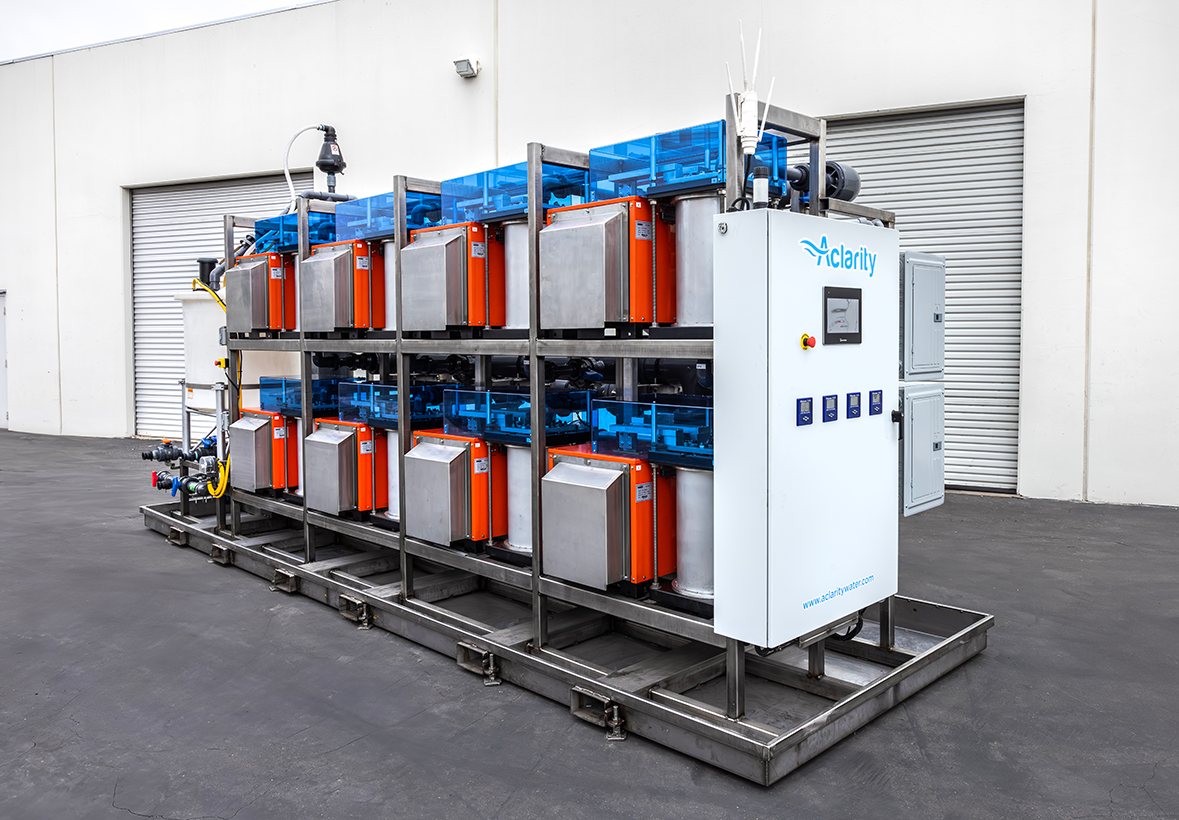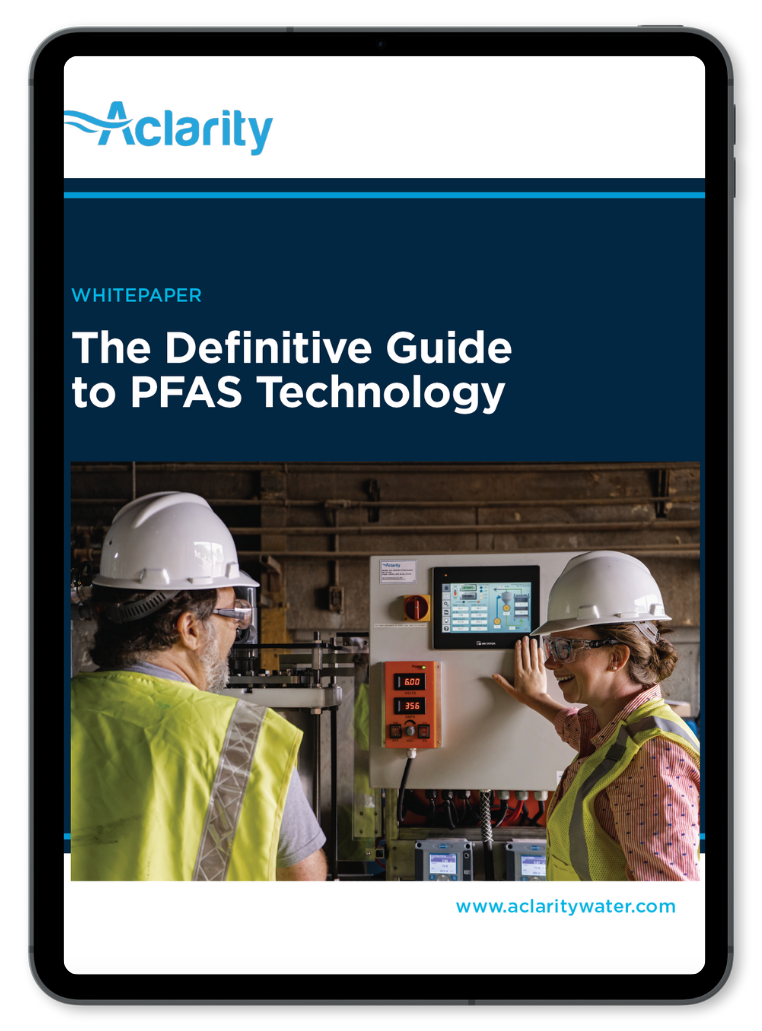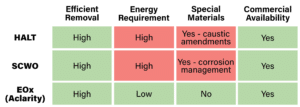An Overview of PFAS Destruction Technologies
February 15, 2024 | 10 minute read

PFAS Destruction - An Introduction
PFAS (per- and polyfluoroalkyl substances) are a large group of over 14,000 man-made chemicals. They are often called ‘forever chemicals’, as they do not break down and remain in the environment. Due to their widespread use PFAS are found to be accumulated in living organisms, all over the world. (Source: Agency for Toxic Substances and Disease Registry - ATSDR).
Due to their unique properties as surfactants and miscibility (the property of two substances to mix in all proportions forming a homogeneous mixture), PFAS are used in small concentrations in many consumer goods including:
- non-stick cookware
- water-repellent clothing
- stain resistant textiles
- hygiene products
- cosmetics
PFAS compounds can easily penetrate soil, water, and air during their production and use, but PFAS also enters the environment in large quantities at landfills and ultimately ends up in landfill leachate.
Why Destroy PFAS?
There is a huge obligation to protect general public health that must be achieved by the removal of PFAS already present in the environment. It is crucial to remove this PFAS from the environment to mitigate the risk of further exposure to these chemicals and their harmful effects in humans, such as : increased cholesterol levels, lower immunity, pregnancy-induced issues like hypertension and preeclampsia, decrease in birth weight, kidney and testicular cancer (Source: ATSDR).
For organizations concerned with PFAS, such as landfills or industrial manufacturing sites, there are important and tangible incentives to actively support PFAS remediation, particularly PFAS destruction in water and wastewater for example:
- Compliance with evolving environmental regulations, which minimizes risks of regulatory fines and legal consequences, and ensures smooth business operations.
- Authentic commitment to environmental and social responsibility, which resonates positively with local communities, consumers, investors, and stakeholders.
- Innovation and continuous improvement. Supporting PFAS destruction showcases a commitment to innovation and environmental leadership. Organizations involved in cutting-edge technologies and solutions gain a competitive edge in their industry.
All above are incentives for the deployment of systems for PFAS destruction systems. While there are upfront costs associated with PFAS destruction, the long-term benefits include reduced costs related to regulatory compliance, legal actions, and reputational damage, contributing to sustained financial health such as turning the PFAS destruction system into a revenue generation stream.

The Definitive Guide to PFAS Technology Whitepaper
Comprehensive guide to understanding PFAS management strategies to reduce risk and safeguard environmental and public health.
Stay current on advantages and disadvantages of technologies available for PFAS:
- Removal
- Disposal
- Destruction
What are some of the challenges with PFAS destruction?
The destruction of PFAS poses several challenges due to the unique properties of these compounds, therefore key challenges associated with PFAS destruction include:
1. Persistence in the Environment
PFAS are highly recalcitrant compounds, which means they are not degraded by microorganisms, therefore they accumulate over time. This persistence makes it challenging to find effective biodegradation methods, which is the approach most often used to remove pollutants from leachate, groundwater, and soil. The persistence of PFAS precludes the removal and storage of PFAS as a means of treatment – moving PFAS from one environment to another is not a solution and is just the relocation of the problem. Only their destruction can break this vicious cycle of moving ‘forever chemicals’ around.
2. Complex Chemistry and By-Products Formation
PFAS is an extremely diverse group of chemicals and complete decomposition is often difficult to achieve. Some treatments result in the formation of harmful by-products. Thus, when considering physical chemistry-based treatment systems for PFAS the choice of degradation method needs to be tailored to the specific PFAS contaminants present and ensure that the decomposition derivatives are also destroyed or at least not more problematic than the original PFAS.
3. Energy and Material Requirements
The fluorine-carbon bond is one of the strongest single bonds in chemistry, thus some PFAS destruction methods are energy-intensive. Some PFAS destruction methods apply not only high energy but also require the presence of additional chemicals to create harsh caustic conditions, for the C-F bond to be broken.
4. Scalability and Practicality
As there is a limited number of scientifically proven technologies to destroy PFAS, many of them are still laboratory-scale systems struggling to scale up to meet municipal and industrial needs. The ease of use of the methods also can be a limiting factor in moving a technology from a laboratory scale, where the system is operated by scientists and experts, to field installation run by landfill or wastewater treatment operators. Be sure to ask about in field and commercial sized deployments. How long has the technology run for and at what capacity?
How is PFAS Currently Destroyed?
-
Hydrothermal Alkaline Treatment (HALT)
This method relies on high temperature, compressed water along with an added chemical caustic reagent to break the strong carbon-fluorine bonds that hold PFAS together.
-
Supercritical Water Oxidation (SCWO)
This method involves heating water above 705°F and pressurizing it to above 3200 PSI resulting in a “supercritical” state of water that can accelerate chemical oxidation.
-
Electrochemical Oxidation (EOx) process involves the passage of an electrical current through a liquid solution to mineralize PFAS compounds on the anode surface. This method requires less energy due to ambient temperatures and pressures.
What Method to Choose?
When selecting the best method for PFAS destruction some key questions need to be considered:
- First and foremost does the method work and destroy PFAS and all possible destruction derivatives?
- Which applications is it ideal for and does that fit your application? Does it struggle with any particular constituent ie: technologies that don’t perform as well with high salinity streams?
- Is the method practical? Will it require a lot of oversight and maintenance?
- Is it a commercially available and economically viable option to destroy PFAS on an industrial scale?
DOWNLOAD NOW: The Definitive Guide to PFAS Technology Whitepaper
Does the Method Work?
1. Process Efficiency
When it comes to process efficiency in destroying PFAS preliminary data indicates nearly 99% effectiveness of SCWO in destroying some of the PFAS (Source: PFAS Destruction Through Supercritical Water Oxidation), while HALT and EOx have shown the ability to completely destroy PFAS (Source: MIT Technology Review, 2023).
2. Sustainability
SCWO, HALT, and EOx have all been demonstrated to effectively destroy PFAS, the energy and materials required to achieve this destruction, differs considerably between them.
Electrochemical oxidation has low energy requirements compared to SCWO and HALT. In terms of non-electrical consumables, HALT requires caustic addition to be effective, and SCWO requires specialized materials to prevent corrosion of reactors and piping, as the process causes precipitation of salts. The capital expenditure required to construct a SCWO reactor is high due to the material required to withstand the high temperatures and pressures.
3. Commercial Availability
EOx, SCWO, and HALT have all been deployed at a commercial scale while plasma is at the bench scale of development.
Of these three technologies only EOx ticks all the boxes of being an effective, low-cost, sustainable, and commercially proven technology.

The Aclarity Solution
Aclarity’s electrochemical oxidation tackles PFAS contamination efficiently destroying PFAS compounds, including difficult to treat and short-chain compounds.
Aclarity’s electrochemical oxidation has the advantage of being an industrial-scale system to treat PFAS in water streams.
4 Key Reasons Why Aclarity is Better
- Aclarity’s EOx has low energy costs (as low as 40 w-hr/gal) and efficacy on high concentrations of PFAS from 1,000ng/L up to as high as 15 million ng/L.
- The process operates safely and simply, without extreme conditions such as high pressure, temperature, and or alkalinity, making it a user-friendly solution.
- Aclarity’s EOx is a plug-and-play system, which integrates into existing leachate tanks without disrupting site operations or with minimal operator involvement.
- Aclarity’s technology eliminates the need for pre-concentration and is able to treat raw leachate as well as industrial waste waters, although it can work as a complementary technology to pre-concentration technologies when needed. This greatly reduces the need for off-site disposal.
Summary and Conclusion
There are many reasons to destroy PFAS.
Firstly, there is an obligation to protect public health and in doing so protect the health of all our families. We are obligated to ensure the safety of water resources to be compliant with laws and regulations. In the long run, companies that proactively deal with PFAS will be recognized for their commitment to a sustainable future and as an innovation and industry leader. When and how we choose to destroy ‘forever chemicals’ will have a tangible impact on achieving all these goals.
Destroying PFAS will be a historical milestone for humanity, comparable to the mutual action we already took as a collective in dealing with the ozone hole started by ratification of the Montreal Protocol in 1987. Considering the technologies available to start destroying PFAS right now, the clear leading option is Aclarity’s electrochemical oxidation. Aclarity’s EOx is market-ready, safe and the most economically viable system to destroy PFAS in leachate and other water and wastewater streams.
Looking to learn more? Get a free evaluation from Aclarity. As with all water treatment, due to the varying nature of leachate and other wastewater streams, results may vary. Aclarity does not advise on PFAS destruction potential until a water analysis is provided and lab scale testing has been completed. Get started today!

WHITEPAPER
Download The Definitive Guide to PFAS Technology whitepaper and delve into current PFAS removal technologies. In this whitepaper, analyze the pros and cons of a variety of PFAS technologies and discover practical exercises for organizations to identify and implement suitable solutions. In this comprehensive document, walk away with an understanding of PFAS management, facilitating informed decision-making to reduce PFAS risk and protect environmental and public health.
Stay in the Loop
Sign up with your email address to receive news and updates.
